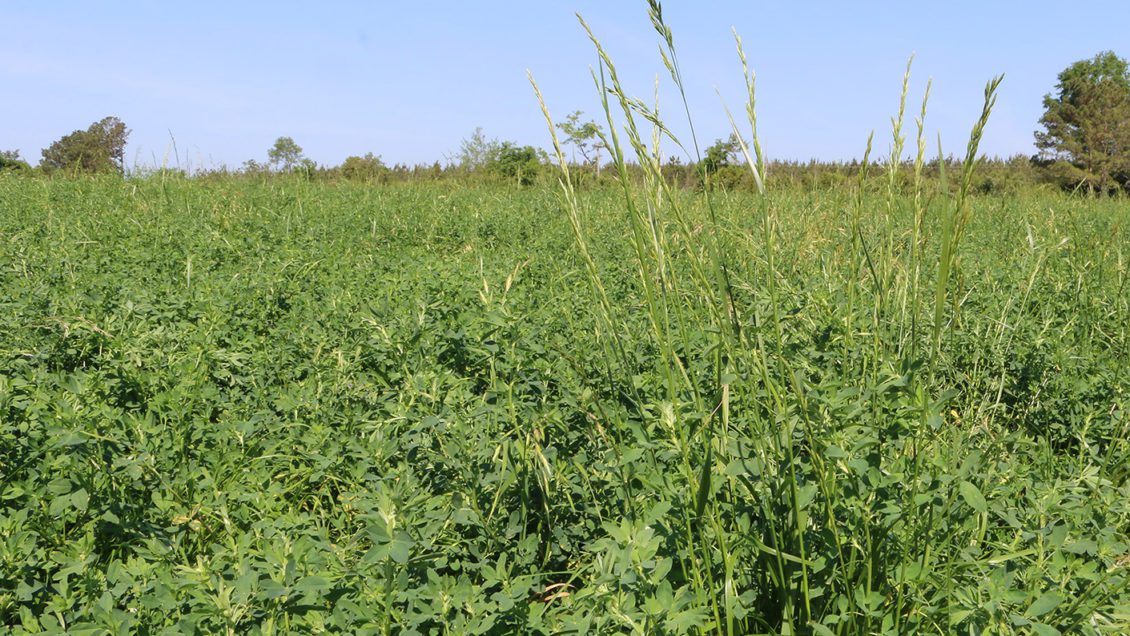
I need an around-the-year food supply for my herd, so I attended this field day to learn more about establishing and harvesting alfalfa.
– Stanley Kottayadiel, Elberton, Georgia, farmer.
Alfalfa often is referred to as the “Queen of Forages” but perceived lack of persistence and low soil pH levels in the southern United States are keeping this queen from her throne.
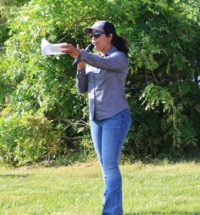
To help producers learn how to help alfalfa regain royalty, researchers from Clemson University, Auburn University, the University of Georgia (UGA) and the University of Florida (UF) teamed up to host an Alfalfa in the South Field Day for more than 100 participants from South Carolina, Georgia and Florida, at FoxPipe Farm in Laurens, South Carolina.
“Alfalfa once was a predominant perennial legume species in the southern United States,” said Liliane Silva, Clemson Cooperative Extension Service forages specialist housed at the Edisto Research and Education Center in Blackville, South Carolina. “It is not grown as much today, mainly because of lack of knowledge of management requirements and soil pH levels.”
Soil pH, or acidity levels, in the southern United States range from 4.5 to 5.0. Optimum pH for alfalfa ranges from 6.5 to 7. Reed Edwards, co-owner of FoxPipe Farm, has been growing alfalfa since 2016. He said it’s important to “get the pH correct from the beginning” and keep soil acidity levels in check.
“I’ve had a lot of challenges getting the soil pH to move,” said Edwards, who also talked about growing lespedeza. “This is a red clay environment, so it’s important we have regular soil tests conducted. Soil tests can save us money.”
In addition to a proper pH level, alfalfa also requires high amounts of potassium.
To help people learn more about forage crops, Silva has a YouTube channel, Forage Drops. Videos offer research-based advice on practices to follow to create healthier forage systems.
Alfalfa companion crops
When companion crops are grown with alfalfa, management practices should be adjusted to maintain desired proportion of alfalfa crop in the mixture. Ideal companion crops include grasses, such as bermudagrass and fescue.
A presentation on alfalfa-bermudagrass systems was made during the field day. Participants learned that interseeding alfalfa in bermudagrass can improve forage yield and quality. The Alfalfa Bermudagrass Management Guide, written by Silva, Jennifer Tucker of UGA and Kim Mullenix of Auburn University, compiles best management practices for growing the forages together.
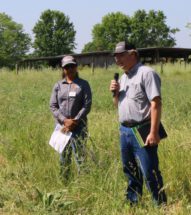
Important steps must be followed for producers growing novel fescue with alfalfa. John Andrae, fescue expert and assistant director of the Clemson Experiment Station, said some tall fescues produce ergot alkaloids that can be toxic for livestock. Andrae, noted that “fescue is a fantastic forage,” but producers should check for toxicity before using it.
“When converting a field from toxic to non-toxic, the first step is to verify if it is toxic,” Andrae said. “If a field is found toxic, you will need to get rid of the toxicity before allowing livestock to graze on it or eat from it.”
To verify a pasture is toxic, send fescue samples to a commercial laboratory.
Several methods can be used to replace stands of toxic tall fescue. One is the spray-smother-spray method. This involves spraying a toxic pasture in the spring and planting a dense smother crop such as pearl millet. Producers should manage the smother crop as they normally would. After the cover crop is grazed or harvested, the field is sprayed again.
Another method is the spray-wait-spray method – grazing or cutting a field and spraying with a burndown herbicide 6 weeks and again at 4 weeks before the target planting date.
The third method, spray-spray-plant, involves spraying herbicides in the late summer and again four-to-six weeks later followed by planting a new fescue variety just after the second herbicide application.
Regardless of what method is chosen, UGA’s Jennifer Tucker said farmers should get rid of toxic tall fescue as soon as possible as it is the “diabetes of grasses,” or mix the toxic fescue with other non-toxic grasses to decrease toxicity to animals.
Cover crops and nutrient cycling
Field day topics also included planting cover crops to help improve forage production and distribution. Cover crops protect soil with plants that may or may not be used as an additional cash crop, help increase soil fertility and soil quality, manage soil erosion, improve water retention and infiltration, and help to manage weeds, pests, and diseases, as well as increase biodiversity and native wildlife. In addition, cover crops can be used for forage production and be harvested for hay or grazed.
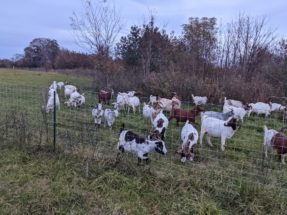
Leanne Dillard of Auburn talked about how cover crops can improve soil health and provide weed control as well as “allow for year-round grazing.” For growers who plant cover crops, Reid Miller, Clemson area livestock and forages agent, advises scouting for insect pests and diseases to ensure a healthy crop.
Appropriate grazing management can be an ally in keeping a healthy forage stand, Dillard said, by promoting nutrient cycling – replacing nutrients in a pasture from the waste of the livestock that graze it.
Clover is a legume that can be used as a cover crop. Joe Bouton, UGA emeritus professor, talked about how clovers help tall fescue grow and are nutritious for animals. Clovers also can help build soil fertility, prevent erosion and put nitrogen back into the soil through biological nitrogen fixation.
Bouton is also credited with developing two alfalfa varieties for the South – Bulldog and Alfragraze. Bulldog 805 and Alfagraze 600RR varieties are recommended for the South; for further recommended options, consult your Extension agent.
Stanley Kottayadiel raises 160 head of Boer and Kiko goats on his farm in Elberton, Georgia. He attended the field day to learn more about growing alfalfa in his pastures.
“I want to increase my herd to 500 goats,” Kottayadiel said. “I need an around-the-year food supply for my herd, so I attended this field day to learn more about establishing and harvesting alfalfa.”
Agricultural economics
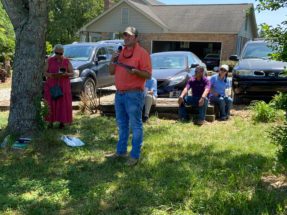
Producers are facing historically high prices for fertilizer, fuel and labor, contributing to higher costs for food and fiber production. While the outlook may look gloomy, Chris Prevatt, Extension agent with the University of Florida Institute of Food and Agricultural Sciences, said “the potential for profitability is still there,” although “the next few years will be tight.” Supply chain issues and the War in Ukraine are partly to blame.
“These are challenging times for forage producers,” Prevatt said. “Fertilizer costs have increased to unprecedented highs and input prices, in general, are higher across the board. Producers are going to have to determine their needs vs. their wants.”
But producers should not worry, he said.
“Work with a budget,” Prevatt told producers. “I know inputs today are challenging, but things are going to change.”

According to the United States Department of Agriculture, fertilizer prices have skyrocketed since January 2021. The agency has plans for a program to support independent, innovative and sustainable American fertilizer production. Initially, the program was for a $250 million investment in domestic fertilizer production. A short time later, U.S. President Joe Biden announced he was doubling the initial investment to $500 million to lower costs and boost availability for farmers, so they can obtain inputs they need at prices they can afford to maximize yields. Details on the application process will be announced soon.
Calculators and web apps developed by the Clemson Extension Precision Agriculture team can help growers make proper management decisions and develop prescription plans for their crops. These calculators and web apps can be found at https://bit.ly/CES_Calculators_WebApps.
-END-
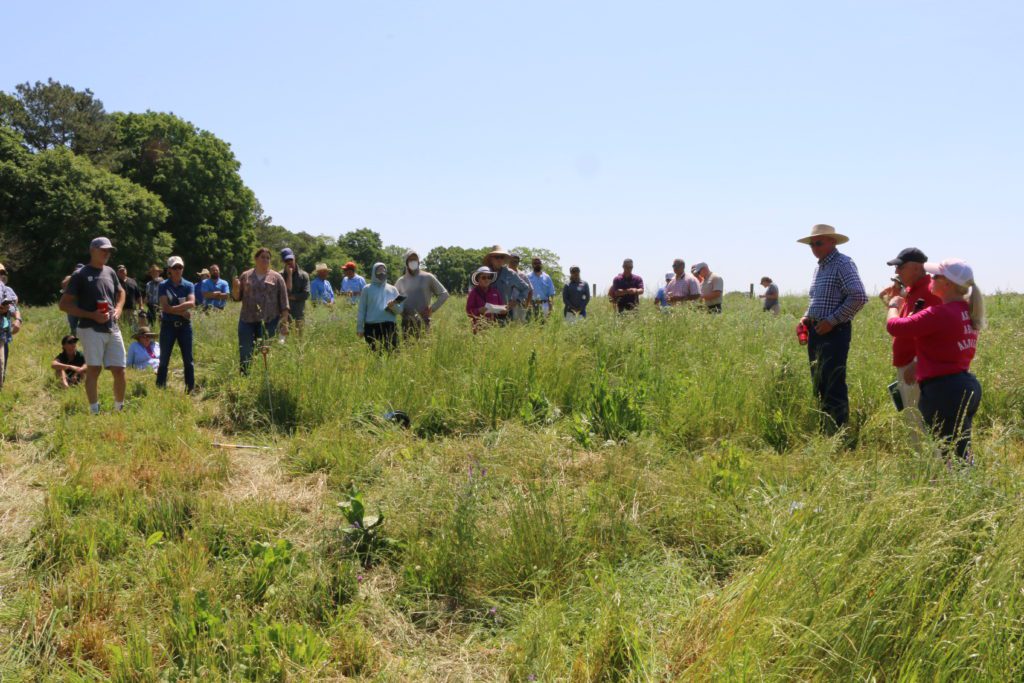
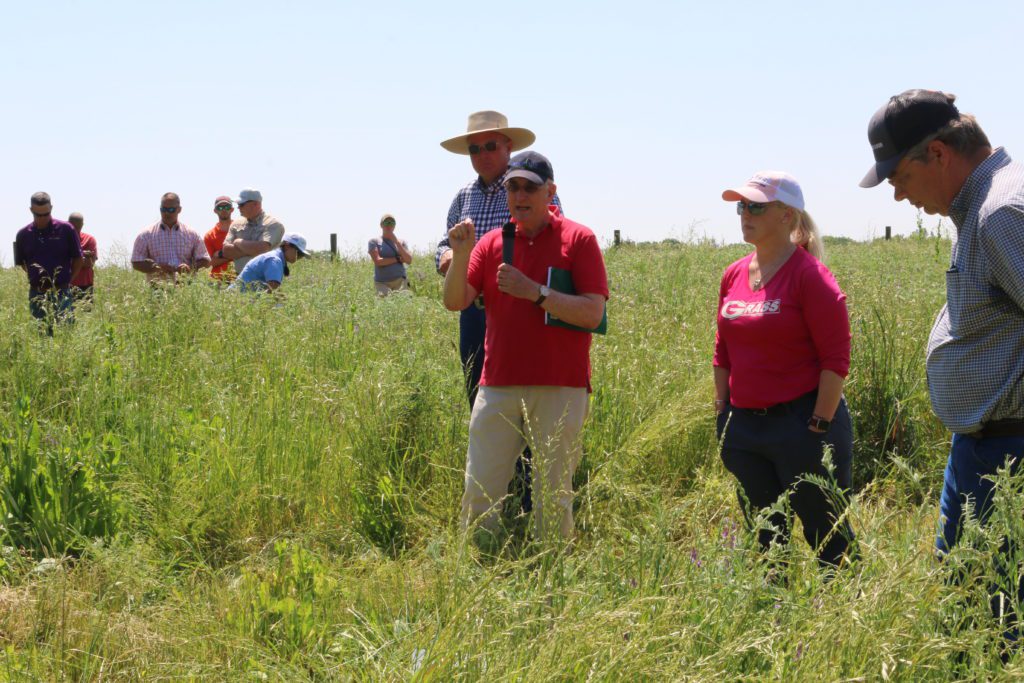
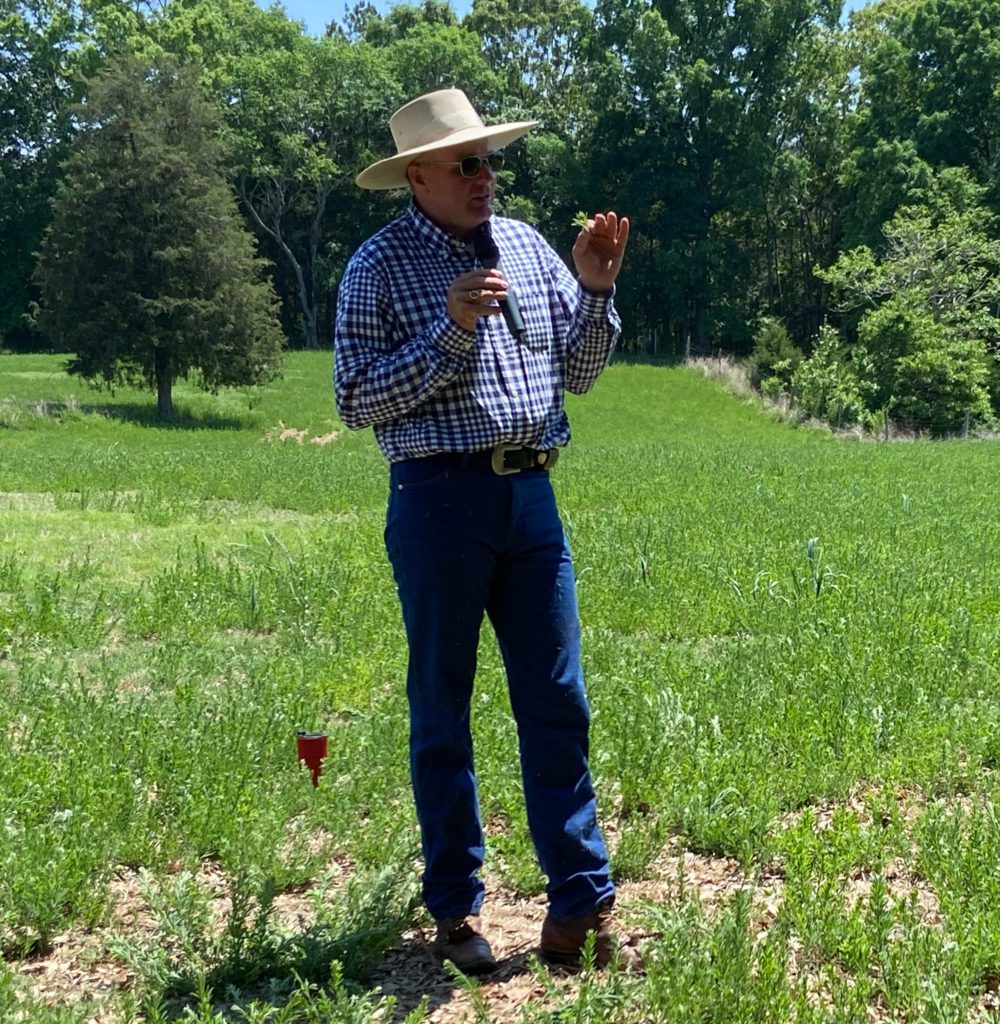
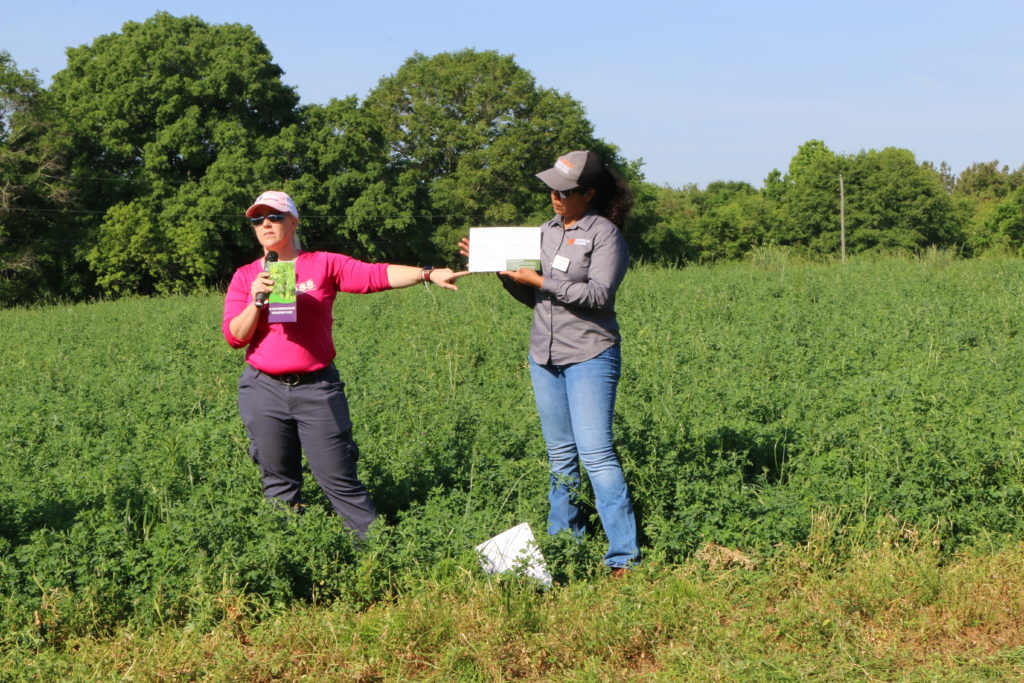
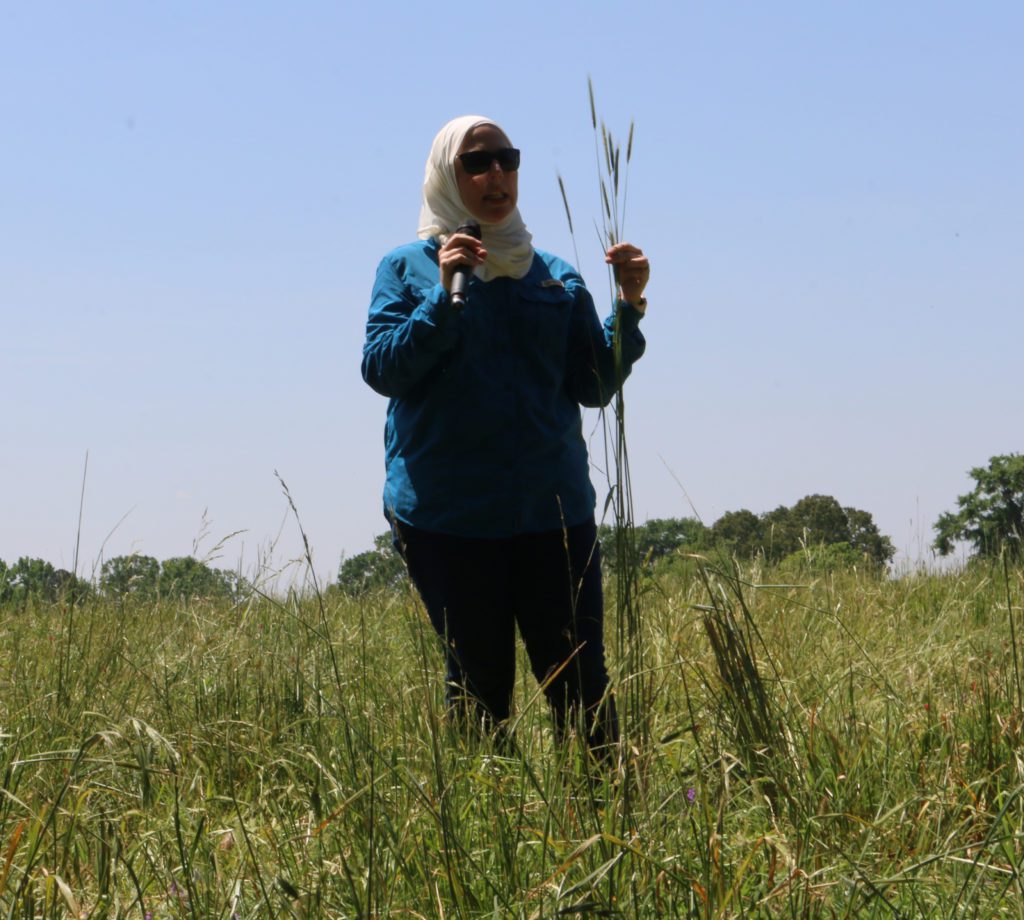
Get in touch and we will connect you with the author or another expert.
Or email us at news@clemson.edu
